|
|
|
|
|
|
|
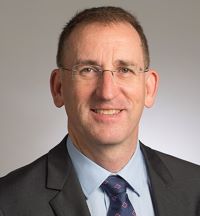
Kia ora koutou,
As we await the Government's response to the Science System Advisory Group's recommendations, the science community is clearly in a period of transition. Recently, the Minister announced changes to the Marsden Fund, refocusing it on core science and disbanding the humanities and social sciences panels.
The updated Investment Plan emphasises research on economic, environmental, and health benefits for Aotearoa New Zealand. While these changes may create new opportunities for some IRANZ members, others may face challenges.
Some members are concerned about the negative impact of removing the Humanities and Social Science Panels from the Marsden Fund - a point of view shared by Royal Society Te Apārangi President Distinguished Professor Dame Jane Harding in a recent open letter to the Prime Minister. Social sciences and humanities research can provide the bridge to ensure scientific research meets the needs of end-users and to enable successful commercialisation. In addition, the humanities and social sciences provide essential context to issues affecting Māori. The removal of that context could jeopardize the trust and relationships between Māori communities and researchers in all fields and ultimately undermine the ability to identify issues and develop solutions that benefit all of Aotearoa.
Despite tightened budgets across the board, the independent science sector continues to demonstrate resilience, producing world-class research with real-world impacts.
First, we extend our heartfelt congratulations to Professor Richard Beasley, recipient of the Rutherford Medal from the Royal Society Te Apārangi. Richard, Director of the Medical Research Institute of New Zealand, has transformed asthma treatment globally. Asthma remains a significant health challenge in Aotearoa New Zealand, which has one of the highest prevalence rates in the world, but Richard's work has brought relief to countless individuals.
A warm welcome also goes to our newest member, Estendart Research Limited (ERL), based in Palmerston North. ERL is a distinguished contract research organisation excelling in international standard-compliant human and veterinary life sciences studies. Led by the highly experienced Dr Shirli Notcovich, ERL brings extensive expertise in managing research trials across diverse species. You can read about their research on cow mastitis in this issue. IRANZ is delighted to have ERL join our network in the agricultural and medical sciences, further strengthening New Zealand's research capabilities.
This year has also marked a significant milestone for IRANZ with the completion of our new Constitution under the Incorporated Societies Act 2022. This was the first revision since our founding in 2009 and required addressing over 30 new requirements. In line with the recommendations of our equity, diversity and inclusion (EDI) programme Ngā Mahi Ngātahi ki Aotearoa, we aligned our governance and operations with Te Tiriti o Waitangi. We introduced a Te Reo Māori translation into a summary of our Constitution. We are proud to share that our updated Constitution has been approved, and IRANZ has received its new Certificate of Incorporation.
As the summer holiday season approaches, we hope you can take a well-deserved break. Interesting times lie ahead for the science sector, and we look forward to working together in the new year.
Meri Kirihimete me te Hape Nū Ia from the IRANZ Team.
Dr John McDermott
IRANZ Chair
|
|
|
|
|
|
|
- Kjesten Wiig appointed Director of Malaghan Institute
- Cawthron summer scholars
- Mātai welcomes 15 Summer interns
- BRIght Outlook: Dr Juliet Ansell
- Dragonfly Data Science: Begroeting Amsterdam!
- Lincoln Agritech: Dutch students spread their wings
- Wlla Abbad - Winner of the Women in STEM HERA/ACM CRC Scholarship
- Malaghan visiting researcher: Dr Alex Spencer
- Lincoln Agritech interns gain new career insights
- Douglas Steiner joins Cawthron's Board of Directors
- ...and much more.
Follow the link for more details on the December 2024 news briefs from our Independent Research Organisations.
READ MORE →
|

| Professor Kjesten Wiig has been appointed Director of the Malaghan Institute of Medical Research. Photo: Malaghan Institute of Medical Research. |
|
|
|
|
|
|
Professor Richard Beasley CNZM FRSNZ has been awarded the Rutherford Medal by the Royal Society Te Apārangi for revolutionising the treatment of asthma worldwide.
Richard, a clinician researcher, is Director of the Medical Research Institute of New Zealand, Research Physician at Te Whatu Ora Capital, Coast and Hutt Valley, Professor of Medicine at Te Herenga Waka - Victoria University of Wellington, Adjunct Professor at Ōtākou Whakaihu Waka University of Otago and Visiting Professor at University of Southampton in the United Kingdom.
His main research focus has been on asthma, which has been a major health problem in New Zealand, which has one of the highest rates of asthma in the world.
In 1985, Richard was awarded a fellowship to undertake postgraduate research and training in asthma with Professor (now Sir) Stephen Holgate in Southampton.
“This was a career-changing experience as I came to appreciate the importance and impact of clinical research,” Richard said.
MORE →
|
|
|
 |
| MRINZ Director Professor Richard Beasley has been awarded the Rutherford Medal. Photo: Royal Society of New Zealand, Rebecca McMillan. |
|
|
|
|
|
Liver cancer rates in New Zealand have been steadily climbing since the 1980s. Today, around 400 New Zealanders are diagnosed with this disease each year, with rates higher in Māori than non-Māori - a disparity influenced by complex social, environmental, and health factors. Known risks for developing liver cancer include fatty liver disease, hepatitis B, obesity, and alcohol consumption.
Dr Olivia Burn has spent the past twelve months working as a Malaghan International Research Fellow on a collaborative liver cancer programme at the Icahn School of Medicine at Mount Sinai Hospital in New York. Now, armed with new skills, connections, and expertise, she's back at the Malaghan Institute, keen to apply what she's learned to make a difference for the many Kiwis living with liver cancer.
“Liver cancer patients often have fewer treatment options compared to other liver diseases and cancers,” says Dr Burn. “And those that do exist are not hugely effective in the long term. Immunotherapies like immune checkpoint inhibitors are making strides, but they're still a long way off compared to treatments for other kinds of cancers.”
MORE →
|
|
|
 |
| Dr Olivia Burn. Photo: Malaghan Institute of Medical Research. |
|
|
|
|
|
RNZ's Claire Concannon, for Our Changing World, recently visited Mātai Medical Research Institute to report on their research. She interviewed Research Director and Chief Executive Dr Samantha Holdsworth.
"When Dr Samantha Holdsworth started her academic path, she studied physics at the University of Canterbury, focusing on astrophysics.
"Switching to medical imaging for her master's and PhD in Australia eventually led her to the prestigious Stanford University in California. Here she focused in on MRI (magnetic resonance imaging) and investigated new ways to make it faster and more efficient.
"But after 11 years of advancing MRI techniques, she returned home to her native Gisborne with big plans."
Samantha outlines a new MRI technique to amplify movement in images. The method has numerous potential applications from helping guide neurosurgeons, to providing a non-invasive way of detecting increases of pressure in the brain. Mātai's research programmes include what happens to the brain as a result of methamphetamine use, and improvements seen during treatment. The institute is also pioneering a new ultra-high contrast MRI technique that for the first time has allowed the possibility of being able to 'see' concussion.
MORE →
|
|
|
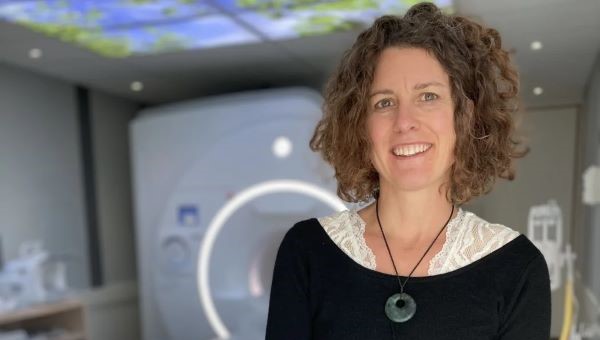 |
| Dr Samantha Holdsworth. Photo: Mātai Medical Research Institute. |
|
|
|
|
|
Motu Research recently announced that two of their research fellows have been awarded prestigious Marsden Fund grants to advance innovative studies.
Inter-Firm Alliances
Motu Fellow Tadhg Ryan-Charleton leads a project to create a dataset on inter-firm alliances, particularly between Māori-led and non-Māori firms. Collaborating with Nuno Oliveira (Tilburg University) and Professor Jarrod Haar (Massey University), the research explores how firms balance financial and environmental goals, informing business and policy decisions.
Exploring Sustainable Wellbeing
Senior Fellow Arthur Grimes joins the Marsden-funded project "Sustainable Wellbeing, Institutions, and Our Changing Relationship with Papatūānuku," led by Professor Les Oxley (University of Waikato) with Motu Trustee Professor Sandy Morrison. Arthur will explore trade-offs in outcomes over time, building on his advisory work with The Treasury.
These pioneering projects highlight Motu's commitment to advancing research that fosters sustainable progress and equitable partnerships.
MORE →
|
|
|
 |
| Image: Royal Society Te Apārangi. |
|
|
|
|
|
In the only national study of its kind for 20 years, nine out of ten Kiwis consider their home to be a “healthy” place to live, even though many still experience cold, damp, condensation and mould, and wish their home was warmer.
The landmark study is collecting data from over 750 households across Aotearoa New Zealand. This includes a survey of 425 households, with 287 of these being monitored for energy usage and indoor conditions.
Data from the household survey and early data from a smaller group of 125 homes monitored over winter 2023 show that homes - especially bedrooms - are warmer than when BRANZ last conducted this study 20 years ago. However, nearly half (48%) of the survey respondents said they had mould in their home (11% said it was larger than a sheet of A4 paper) and 33% said their home was damp at least some of the time.
Around one in five said they could see their breath inside and a similar amount said their home was cold enough that they shivered at least some of the time in winter.
MORE →
|
|
|
 |
| A family home. Photo: BRANZ. |
|
|
|
|
|

|
HERA CEO Dr Troy Coyle writes about Life cycle assessment (LCA) for buildings. LCA is a powerful tool for understanding and assessing environmental impacts of a product, process, or service across all stages of its journey - from cradle to grave.
For buildings, this means tracking impacts across the entire lifecycle: from raw material extraction (cradle), manufacturing and fabrication, building operation, maintenance, demolition and end-of-life use (grave) of building materials.
LCA evaluates general impact areas like resource use, human health and ecological impacts. It's like looking under the hood of sustainability to figure out what's working and where improvements can be made.
LCA is guided by the ISO 14000 series of environmental management standards, in particular, ISO standards 14040:2006 Environmental management- Life cycle assessment- Principles and framework and 14044:2006 Environmental management- Life cycle assessment- Requirements and guidelines which are the two underpinning standards for LCA.
MORE →
|
|
|
|
|
|
Rural crossroads crashes often involve multiple deaths or serious injuries and have a unique profile, which appears to be related to the surrounding environment and road geometry as much as driver factors. Failing to detect the crossroad is a common crash cause at rural crossroads compared to other intersection types.
A research project by Mackie Research, on behalf of the AA Research Foundation, aimed to understand better the frequency and nature of these types of crashes, and whether additional controls might provide safety benefits by gathering data on how often 'failure to detect' crashes occur, analysing the likely causes, and then testing possibilities for mitigations. The trial showed that well-located additional signs and markings can be used to improve crossroad detection.
This human factors study, in combination with other research, should provide road controlling authorities with the confidence to develop and roll out a nationwide low-cost treatment approach to mitigate 'failure to detect' crashes.
MORE →
|
|
|
 |
| Typical features of an approach to a rural crossroad in Aotearoa New Zealand. Photo: Mackie Research. |
|
|
|
|
|
The NTRO Rail Collaborative Group is trialling an augmented level-crossing warning system in New Zealand, in collaboration with KiwiRail and the New Zealand Transport Agency. The project focuses on improving safety at passive level crossings - those marked only by signs and road markings, without lights or barriers - commonly found in remote areas with infrequent train traffic.
Passive crossings are associated with higher collision rates due to missed signage or driver complacency. These incidents often lead to severe injuries, fatalities, and traffic disruptions. Traditional solutions, such as warning lights and barriers, are not cost-effective in remote regions, prompting the need for innovative alternatives.
The trial involves monitoring driver behaviour via cameras for two months, followed by the installation of a solar-powered variable message sign equipped with batteries. This cost-effective solution aims to enhance driver compliance. A similar Australian study in 2024 recorded a 30% improvement in compliance using such signs.
Results from this trial will assess the potential of this technology to reduce vehicle-train collisions and improve safety at passive crossings.
MORE ABOUT NTRO →
|
|
|
|
|
|
|
|
Estendart Research Team Leader Dr Shirli Notcovich says they are rounding out the year with a safety study looking into a new non-antibiotic intramammary treatment for mastitis in dairy cattle. Usually caused by a bacterial infection or other injury to the udder, mastitis is a common disease that causes inflammation of the mammary glands in dairy cows. It can not only be painful and distressing for the cow, but can also significantly impact milk quality and production. Keeping the herd healthy is in everyone's best interest.
Safety studies in animals are essential for evaluating the potential risks and effects of new substances, treatments, and technologies before they can be further assessed for efficacy. These studies play a critical role in understanding how chemicals, drugs, medical devices, and other innovations affect both humans and animals, helping to identify potential toxicological risks or side effects. These studies also help refine dosing protocols, safety thresholds, and determine long-term effects, contributing to more effective and safer treatments.
“On the heels of Anti-Microbial Resistance (AMR) Awareness week, we all know how important it is to start looking at ways to improve antibiotic stewardship. Our role at Estendart Research is to help product development companies continue to develop products such as these, and the first step is to make sure these products themselves are not harmful to animals,” says Shirli.
MORE ABOUT ESTENDART RESEARCH →
|
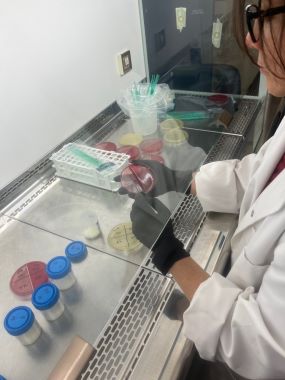
| Pre-screening: Milk samples from participating cows are cultured pre-enrolment to select the healthiest individuals for the study. Photo: Estendart Research. |
|
|
|
|
|
|
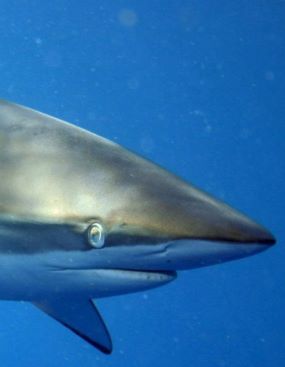
|
Photo: Dragonfly Data Science. |
|
Research presented at a recent Western Central Pacific Fisheries Commission (WCPFC) meeting in Manila suggests that silky shark populations in the Pacific may be recovering.
An ongoing research partnership between Dragonfly Data Science and The Pacific Community (SPC) is playing a critical role in assessing the status of several vulnerable shark species in the Pacific Ocean.
Most recently, Dragonfly Data Science and SPC have been working together to assess the population of silky sharks in the western and central Pacific Ocean.
“From our recent assessment, we're really pleased to see positive signs that the silky shark population is recovering and we have some robust science to support this,” says Dragonfly director and fisheries scientist Dr Philipp Neubauer.
“The fishing mortality of silky shark went from critical levels—in other words, close to levels that would have eventually led to a population collapse—to levels that have allowed the silky shark population to rebuild, which is an astonishing turnaround for a shark species.”
MORE →
|
|
|
|
|
|
Grapevine trunk disease (GTD), caused by fungi entering vines through pruning wounds, leads to wood decay, canopy gaps, and vine death, severely impacting vineyard productivity and sustainability. New Zealand's aging vineyards face significant challenges from GTDs like Botryosphaeria dieback and Eutypa dieback, often identified by staining, cankers, and nutrient flow disruption in vines.
Preventative measures like wound protection are crucial, but for older vines already infected, research at Bragato indicates that remedial surgery offers a promising solution. This involves removing diseased wood above the graft union and training new shoots, preserving the vine's root system for quicker recovery compared to replanting.
Bragato research trials, part of the Vineyard Ecosystems Programme, are exploring optimal practices for remedial surgery in Hawke's Bay vineyards. Early findings show high recovery rates in less severely affected vines, with rejuvenated trunks maintaining vigour and productivity. Monitoring over the next two years will guide cost-effective strategies for extending vineyard longevity and economic viability.
MORE →
|
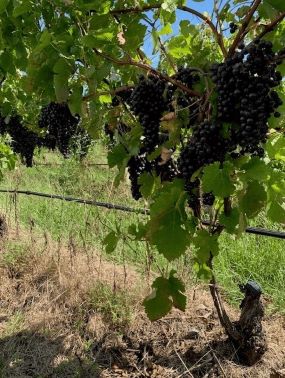
| A grapevine after remedial surgery. Photo: Bragato Research Institute. |
|
|
|
|
|
|
Lincoln Agritech researcher Dr Jeff Lang has been awarded an $820,000 Tāwhia te Mana Fellowship to advance groundbreaking research on earthquake detection using cave stalagmites.
“In young countries such as Aotearoa New Zealand, our knowledge of the long-term recurrence of large earthquakes is limited because our written records are short,” says Jeff. His innovative approach analyses magnesium pulses in stalagmites, hypothesised to form when earthquakes fracture cave rocks, altering groundwater chemistry.
Focusing on caves in Hawkes Bay along the Hikurangi Subduction Margin—Aotearoa New Zealand's largest seismic risk—Jeff will gather and date stalagmite samples. By aligning magnesium signatures with the shaking intensity of known past earthquakes, Jeff aims to develop a tool to measure earthquake intensity and create a continuous seismic record for the Holocene.
Lincoln Agritech's Environmental Group Manager Simon Pollock commended Jeff's achievement saying his research will enhance earthquake forecasting and have a global impact.
MORE →
|
|
|
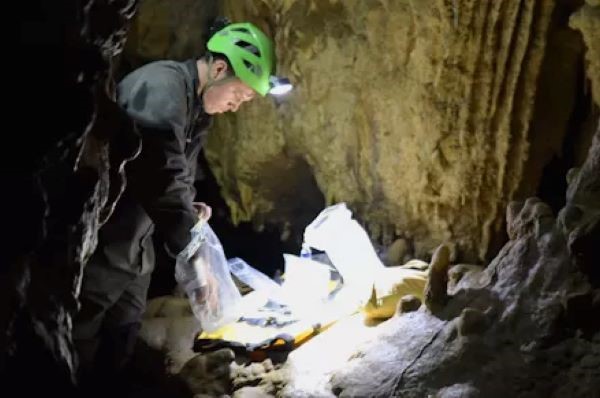 |
| Dr Jeff Lang has been awarded an $820,000 Tāwhia te Mana Fellowship to advance groundbreaking research on earthquake detection using cave stalagmites. Photo: Lincoln Agritech. |
|
|
|
|
|
Emergencies and disasters — whether human-made or natural — are increasing in frequency and severity, impacting lives, communities, and the environment on an unprecedented scale. For Māori, these events pose unique challenges, endangering people, taonga, taiao, and cultural heritage. In response, hono, launched by Te Tira Whakamātaki (TTW) and Ahikaea, offers a transformative approach to emergency and disaster management.
More than a framework, hono empowers Māori communities to lead in disaster preparedness, response, recovery, and resilience. Anchored in tino rangatiratanga, it integrates mātauranga Māori and tikanga to protect Indigenous values and ways of life during crises. As a collective of Māori leaders and communities, hono advocates for equity, provides training, fosters research, and supports Māori-led emergency plans. Guided by Te Tiriti o Waitangi, the initiative addresses Māori strengths and vulnerabilities. Globally, hono shares insights to bolster Indigenous resilience and humanitarian responses.
Jointly managed by Ahikaea and TTW, and based at Massey University's Wellington Campus, hono operates near the Joint Centre for Disaster Research. Its facilities include training rooms accommodating up to 60 participants.
MORE →
|
|
|
 |
| Attendees at the launch of hono and blessing of its Wellington training centre. Photo: Grace Miller, TTW. |
|
|
|
|
|
Aqualinc Research's Matt Bubb writes about changing consent conditions for groundwater takes in the December issue of the Canterbury Farming newspaper. He says there are common misconceptions that can create the frustrating problem of consent holders living with consent conditions that don't reflect what they need to do.
He writes that many are unaware that changes can be made to consents, "It is often possible to alter a consent to make it work for you. In some cases, changes can be made with much less onerous assessment than the original application."
"For example, we recently successfully changed a consent increasing the combined flow rate from bores from 120 l/s to 155 l/s and this was achieved without the need to conduct any well interference assessment.
"This change helped prevent exceeding the maximum take of 120 l/s and the associated headache with non-compliance, but at the same time it built-in more flexibility in how the irrigation system is managed."
Matt writes that there are also generally solutions for season volume alterations, even in over-allocated zones.
MORE →
|
|
|
 |
| Photo: Aqualinc Research. |
|
|
|
|
|
Dragonfly Data Science has been working with Nokome Bentley on his startup, Stencila, which brings large language models to scientific research and publishing.
Stencila is a platform that helps scientists improve the efficiency and reproducibility of their authoring workflows. This next version of Stencila continues this mission by improving the access to, and use of, generative AI in scientific documents.
“AI has the potential to improve scientific productivity a great deal, but there are several things holding those gains back”, Nokome says.
“One is that the interfaces where scientists currently use AI are outside of where they're working. So, they go to Chat GPT, they type something in, and they copy and paste the generated output back into the document.
“In that process, you lose both reproducibility and the provenance of the generated content. But also, the AI doesn't have any context on the document that you're working in, or the relevant scientific literature. Because of that, it often produces inappropriate or incorrect responses.”
MORE →
|
|
|
 |
| Image: Dragonfly Data Science. |
|
|
|
|
|
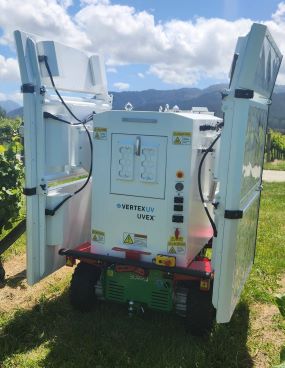
| An efficacy trial in Marlborough over two growing seasons will assess the performance of the UV-C light technology for the control of powdery mildew. Photo: Bragato Research. |
|
Broad-spectrum fungicide use is increasing, posing serious risks to biodiversity in vineyards by killing both target and non-target fungi and destroying beneficial species or strains. The grape industry also faces fungicides losing efficacy, being phased out, or pathogens developing resistance. In Marlborough, where powdery mildew is endemic, growers constantly battle to keep their vineyards disease-free.
A new project led by Bragato Research Institute, in partnership with A Lighter Touch, aims to offer another control option for New Zealand Winegrowers (NZW) members facing powdery mildew problems. Internationally, UV-C light technology has proven to be a cost-effective and environmentally friendlier way to control powdery mildew, and this project aims to demonstrate these benefits in New Zealand vineyards. UV-C light technology offers multiple benefits for disease control in plants, particularly grapevines, making it an attractive alternative to traditional fungicides.
MORE →
|
|
|
|
|
|
Bragato Research Institute (BRI) is leveraging data to address critical challenges in vineyard management. By analysing over a decade of spray diary records via the Grapelink platform, BRI has uncovered significant trends in herbicide use from the 2017/18 to 2023/24 growing seasons.
The findings show a steady rise in herbicide application areas, linked to vineyard expansion. Glyphosate-only herbicides were applied on 1,864 hectares, slightly exceeding the 1,231 hectares treated with non-glyphosate herbicides. Mixed herbicide use dominated, with applications peaking in September. Notably, the use of higher-concentration glyphosate products, such as Gly 570, has surged in recent years, raising concerns about weed resistance or overuse.
BRI's data management system provides confidentiality while delivering insights to improve vineyard practices and guide the search for sustainable alternatives. Collaborative efforts between researchers, growers, and industry partners remain crucial to fostering innovation and supporting the long-term success of New Zealand's wine industry.
READ MORE →
|
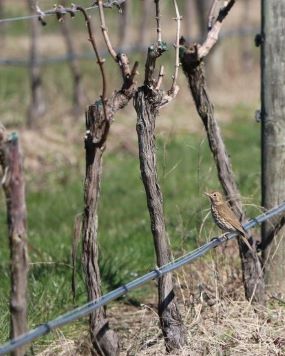
|
|
|
|
|
|

| Stefan Fuchs. Photo: HERA. |
|
The safety of buildings and bridges is essential. Whether it's ensuring that skyscrapers can withstand the impacts of an earthquake, or that bridges remain steady during a storm, determining the response of buildings and bridges to different forces is crucial.
But how do we predict the behaviour of something as complex as a bridge or a high-rise, especially when every structure is unique?
That's where Stefan Fuchs's research comes into play, as part of the "Emerging Technologies" theme led by Professor Robert Amor at the University of Auckland for the HERA-led and Endeavour-funded research to transform the construction sector of Aotearoa using Construction 4.0 approaches.
Stefan, who recently completed his PhD, is diving deep into the structural sensor data to help engineers better predict how buildings will react to the natural and man-made forces they face daily to ensure the safety and comfort of occupants, and longevity and maintainability of these structures as well.
MORE →
|
|
|
|
|
|
BRANZ Technical Writer Bruce Sedcole writes about designing for low carbon in the latest issue of Build magazine. He says our low-carbon future will demand momentous changes to the way designers work that, while initially challenging, will become familiar over time.
"As we approach 2050 and our net-zero carbon emissions target looms, it's time to consider the role architects and designers will need to play in the transition. The construction sector, which contributes approximately 20% of Aotearoa New Zealand's greenhouse gas emissions, has a huge part to play, and reduction efforts will initially be driven by building design.
"We won't achieve the target by incremental tweaks to the specifications of the relatively small number of our new buildings specifically designed to meet their embodied and operational carbon targets. It will take a complete re-evaluation of the way we design all buildings.
"This cannot be limited just to new buildings. We must apply the same rigour to residential alterations and additions and any other buildings we may be adapting or repurposing."
MORE →
|
|
|
 |
| Timber floors have longevity and are a good low-carbon design choice. Photo: BRANZ. |
|
|
|
|
|
|
Check out the IRANZ multimedia page for more.
MORE →
BRANZ: Clause H1 unpacked
In this Master Builders Elevate podcast, Dr Chris Litten, General Manager of Research at BRANZ, unpacks the recent changes to Clause H1 of New Zealand's Building Code. Chris dives into the new energy efficiency standards, detailing updates in insulation, thermal performance, and ventilation requirements, and the practical challenges these pose for builders.
|
|
|
|
|
|
2024 Rutherford Medal: Professor Richard Beasley
Professor Richard Beasley CNZM FRSNZ has been awarded the Rutherford Medal for preeminent research by Royal Society Te Apārangi for revolutionising the treatment of asthma worldwide.
|
|
|
|
|
|
|
Lincoln Agritech: Exploring the Mysteries Beneath New Zealand's Braided Rivers
Discover how a five-year research project has transformed what we know about braided rivers and their connection to groundwater systems. Hydrogeologist Scott Wilson will share insights from this project, which has redefined how we manage braided rivers. Learn how unseen layers beneath these rivers affect our regional water systems and how management choices can have unexpected impacts
|
|
|
|
|
|
|
|
|
|
|
|
WHO WE ARE
IRANZ is an association of independent research organisations. Its members undertake scientific research, development or technology transfer. Members include Aqualinc Research Ltd, Bragato Research Institute, BRANZ, Cawthron Institute, DigiLab, Dragonfly Data Science, Gillies McIndoe Research Institute, HauHau Research, Heavy Engineering Research Association (HERA), International Global Change Institute (IGCI), Leather & Shoe Research Association (LASRA), Lincoln Agritech Ltd, Mackie Research, Malaghan Institute of Medical Research, Manawatū AgriFood Digital Lab, Medical Research Institute of New Zealand (MRINZ), Mātai Medical Research, M.E Research, Motu Economic and Public Policy Research, National Transport Research Organisation, Scarlatti, Takarangi Research Group, Te Tira Whakāmataki, and WSP Research.
|
|
Contact: Dr Rob Whitney, Executive Officer, mobile: +64 27 2921050, email: information@iranz.org.nz
|
| Copyright © iranz |
|
|
|
|
|